 |
 |
 |
| |
Kinetics of release of antiretroviral drugs through a silicone vaginal ring..... Preliminary Results of a non-toxic Silicone vaginal ring to deliver antiviral drugs, protect women against HIV & herpes
|
| |
| |
"These results demonstrate the ability of silicone rings to deliver continuous amount of hydrophilic antiviral drugs that could be effective for neutralizing the viral load of HIV-1 or herpes simplex virus present in semen for a long period of time. The process is intended to be industrialized in order to produce rings at high rate and low cost for use in clinical trials."
"We succeeded in creating a ring that can deliver hydrophilic molecules such as tenofovir, active on HIV-1, and acyclovir, active on herpes virus, despite the fact that silicone is a hydrophobic compound......The aim of our study was to develop a vaginal silicone ring that was nontoxic to the health of users but was capable of delivering multiple active antiviral molecules against various STIs including HIV for a long duration," said Meriam Memmi, author of the study and PhD candidate at University Jean Monnet of Saint-Etienne, France. "This was possible due to the addition of a hydrophilic compound to the silicone, which allowed the drugs to be released from their reservoirs......Vaginal rings with multiple reservoirs present a promising way for preventing sexually transmitted infections (STIs) and notably HIV infection in young women with high risk of exposure. Some of the rings presented in this study were shown to release concentrations of drugs between 1.5 and 3.5 mg/day for acyclovir and 3 to 5 mg/day for tenofovir for as long as 50 days, which corresponds to doses capable of preventing viral sexual-transmitted infections such as HIV-1 infection, hepatitis B and genital herpes. These preliminary results demonstrate the ability of silicone rings to continuously deliver hydrophilic antiviral drugs for a long period of time at a concentration that would be effective for neutralizing the viruses present in semen. The process is intended to be evaluated in clinical trials and to be industrialized with the goal of producing rings at high rate and low cost."
"The propagation of human immunodeficiency virus 1 (HIV-1) infection represents a major problem of Public Health, notably in Sub-Saharan Africa where about six out of ten infected adults are women. Among the new options of preventive therapy, antiretroviral drugs used as microbicides distributed via an intravaginal ring (IVR) constitute an original solution. IVRs represents an interesting mode of drug delivery because they are coït-independent and can be left inside the vagina for several months with release of regular amounts of microbicides. The aim of this work was to evaluate the ability of a silicone IVR to deliver simultaneously several antiviral drugs (Figure 1) through a multiple-reservoir device.......Sexually transmitted infections (STIs) of viral origin constitute a major problem of Public Health, notably in women from low-income countries who were shown to be infected with HIV-1 early in their sexual live, with a gap of 7 to 10 years compared to men. It is difficult for women to master the prevention of STIs since the use of condoms and circumcision is mainly under men control. The aim of our study was to develop a vaginal silicone ring that was nontoxic to the health of users and whose originality was to deliver multiple active antiviral molecules against various STIs including HIV-1 during a long period of time."
"It is now planned to have the rings evaluated in clinical trials, after which it is hoped that they can be produced in large numbers and at low cost."
Reported by Jules Levin
ICAAC 2015 Sept 17-21 San Diego, CA
Meriam MEMMI1, Marlène Desloir2, Blaise Figuereo1, Thomas Bourlet1, Christian Carrot2 and Bruno Pozzetto1
1GIMAP (EA 3064), Faculty of Medicine of Saint-Etienne, University Jean Monnet, University of Lyon, 42023, France
2UMR CNRS 5223, Faculty of Sciences of Saint-Etienne, University Jean Monnet, University of Lyon, 42023, France
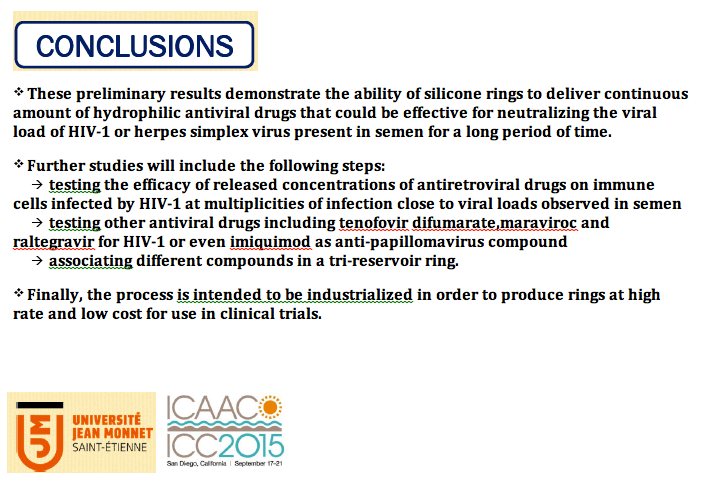

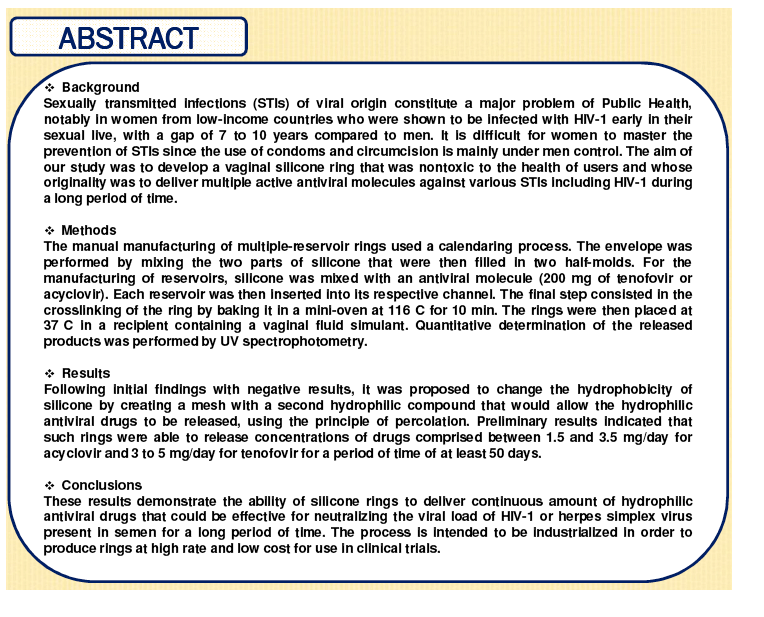
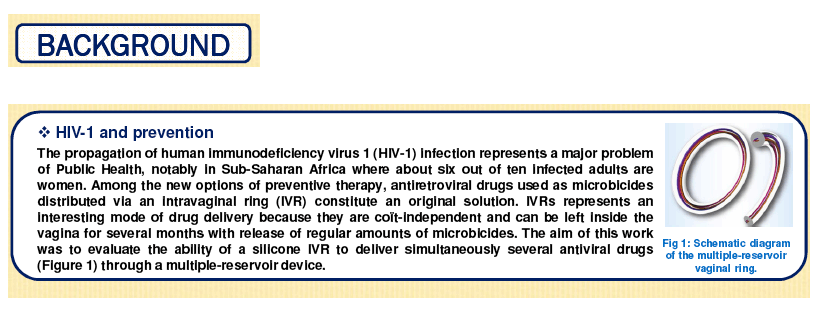
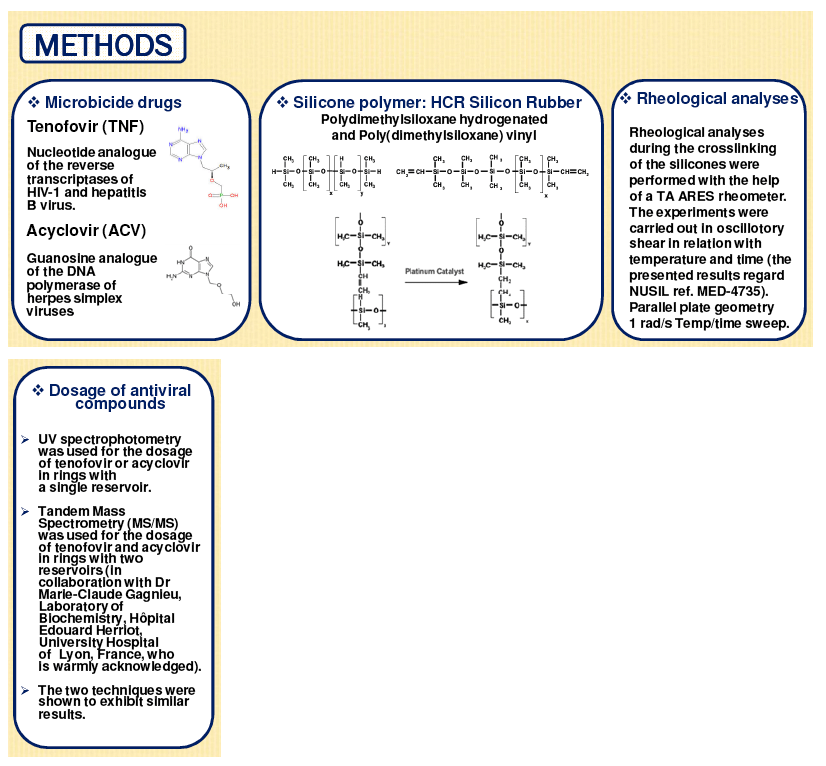

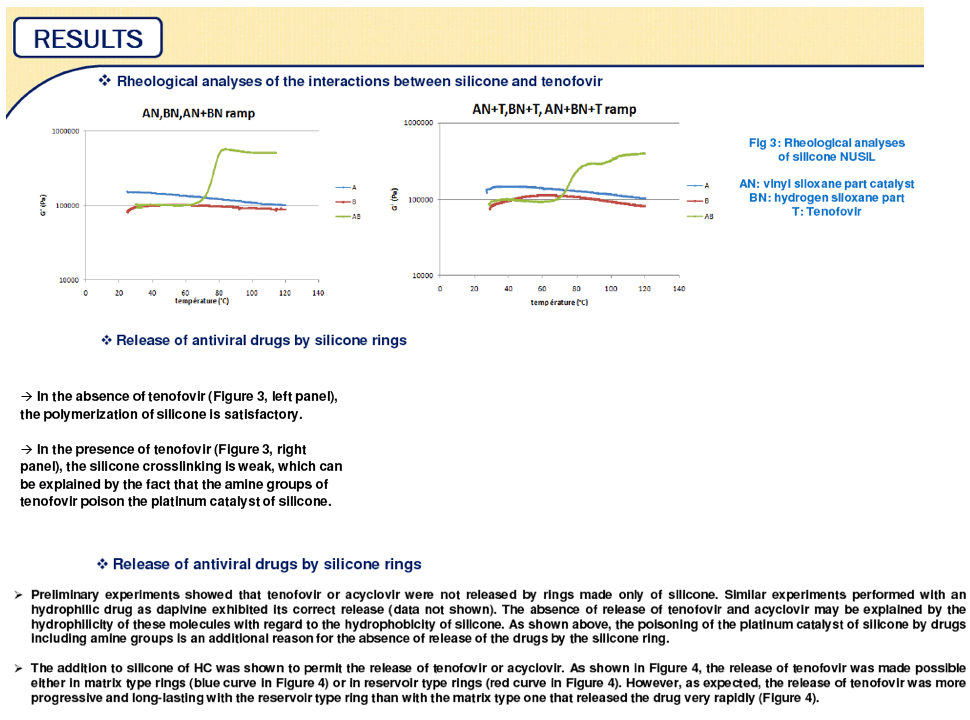
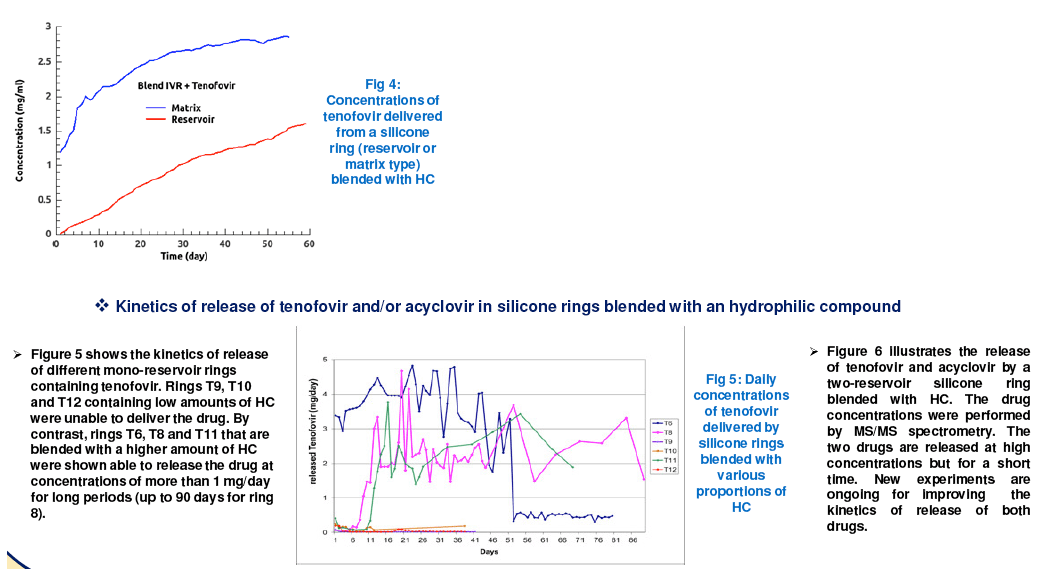
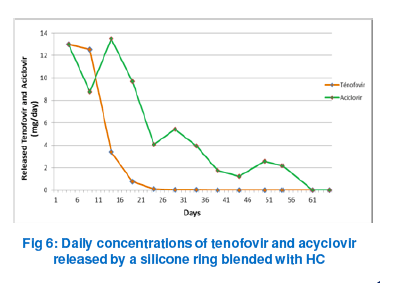
|
| |
|
 |
 |
|
|